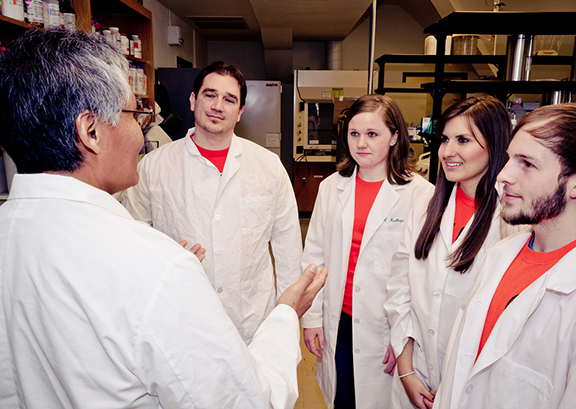New OSU program supports minority science students
Tuesday, July 9, 2013

Called the Science Scholars: The Native American Path, the program guides American Indian students at OSU in pursuing degrees in science, technology, and engineering and mathematical fields.
Gilbert John, OSU associate professor of microbiology and molecular genetics, oversees the program, known as SSNAP for short. One of its main goals is to provide OSU students with good mentors.
"We want to give our minority students an opportunity to excel," John says. "SSNAP provides opportunities for our students to participate in training sessions focused on academic success and professional development."
In fall 2012, the society provided OSU $40,000 and is committed to funding the program for two more years, John says. The federal program is awarded funds through the National Institutes of Health.
The funds allow students to travel to the SACNAS national conference. This year’s conference is in October in San Antonio, and more than 3,000 professional scientists of predominately Hispanic/Chicano and Native American origin are expected to attend. John is pleased the conference is within driving distance as it allows him to take all 22 students in the OSU program to San Antonio.
"Last year, we met in Seattle. This year, I am excited about this conference being so close. We hope to make a major impact," John says.
By impact, John means competitions that include peer-reviewed poster presentations. Students are eligible for cash awards up to $500, however, the conference offers more than cash awards.
“Our students meet with top-notch minority scientists who are dedicated to helping them,” he says. “It is a low-key environment where Hispanic and Native American students can feel comfortable.”
Once a kid growing up on a Navajo reservation in the Four Corners region of New Mexico, John understands the impact of a good mentor.
At Colorado State University, "a professor took me under his wings and from there gave me an open highway to go as far as I could. He was a terrific individual," he says.
To learn more, visit https://sacnas.org/year-round-programs/community/native/osu-ssnap.
For photos, visit http://www.flickr.com/photos/ostatenews/sets/72157634196027002
